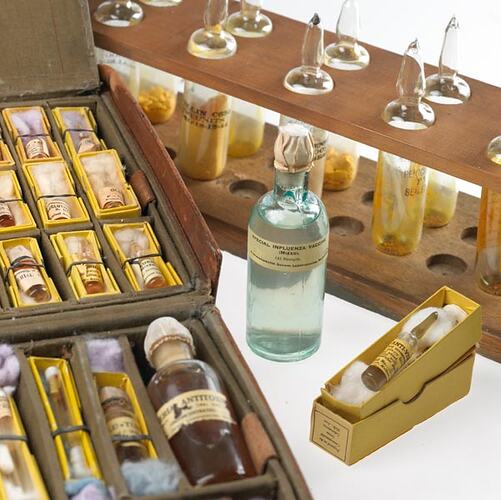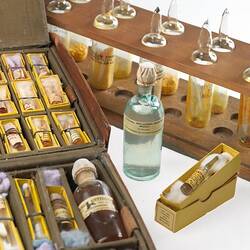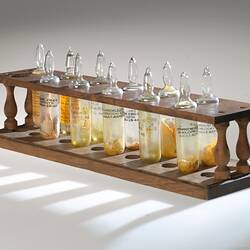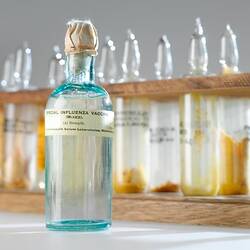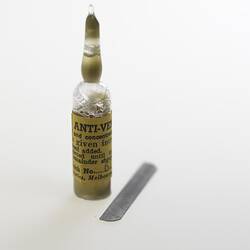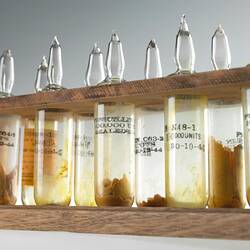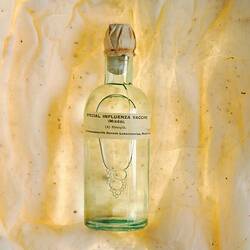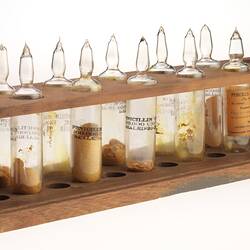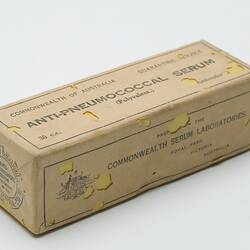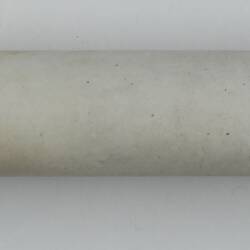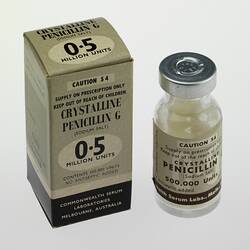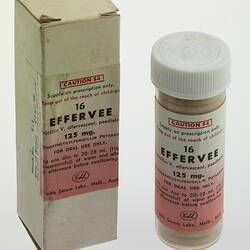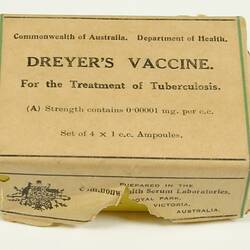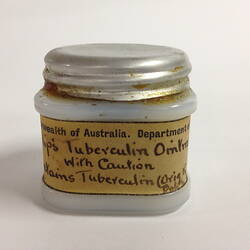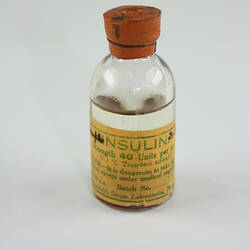The Commonwealth Serum Laboratories (CSL) was founded in 1916 to provide life-saving products to a country isolated by war. The organisation is renowned for its work in the areas of penicillin, antivenoms, hormones, vaccines and blood products. In 1994, CSL Ltd was listed on the Australian Stock Exchange and has achieved considerable success in the international market for bioproducts.
The Museum's CSL collection includes over 400 artefacts from the period 1916 to 1984. The objects were originally collected by CSL staff and volunteers for the CSL Museum, which was once located at the CSL site in Parkville. The collection includes laboratory equipment, instruments, product samples, glassware, and a samples case used by CSL's first medical sales representative while travelling the east coast of Australia. The collection highlights just some of the contributions made by CSL to public health in Australia.
Highlights of the CSL Collection
The first vaccine produced by CSL in 1919. This was used to protect Australians from the pandemic of Spanish influenza.
The sample case used by CSL's first medical sales representative containing 65 products including including insulin and vaccines for diphtheria, gonorrhoea and typhoid.
Tinger snake antivenom from the 1950s. In 1930, CSL and the Walter and Eliza Hall Institute developed the first antivenom for tiger snake bits. CSL continued to develop antivenoms to all venomous Australian snakes, as well as the Red-back Spider and Funnel-web Spider. Other antivenoms produced by CSL save against bites from at least 6 other deadly snake species as well as ticks, box jellyfish and stonefish.
Penicillin Ampoules and Rack from 1944. CSL is renowned for having rapidly implemented methods for the large-scale manufacture of penicillin following the discoveries of Howard Florey in 1939. By 1944, penicillin was available to Australians fighting in the Pacific. Australian citizens were the first in the world to have general access to penicillin.
More Information
-
Keywords
Allergens, Antibiotics, Anti-Venoms, Bacteriology, Biotechnology, Blood Analysis, Diabetes, Diphtheria, First Aid Kits, Hepatitis, Hormones, Immunology, Infectious Diseases, Influenza, Laboratory Apparatus, Laboratory Apparatus & Equipment, Laboratory Glassware, Leptospirosis, Medical Diagnostic Tests, Medical Research, Medicinals & Drugs, Medicines, Microscope Accessories, Microscopes, Penicillin, Pharmaceuticals, Pharmaceuticals Apparatus & Instruments, Polio (Poliomyelitis), Smallpox, Standard Weights & Measures, Tetanus, Tissue Culture Equipment, Tuberculosis, Vaccines, Veterinary Medicines, Veterinary Science, Viral Infections
-
Localities
Parkville, Victoria, Australia, Victoria, Australia, Australia
-
Authors
-
Article types
